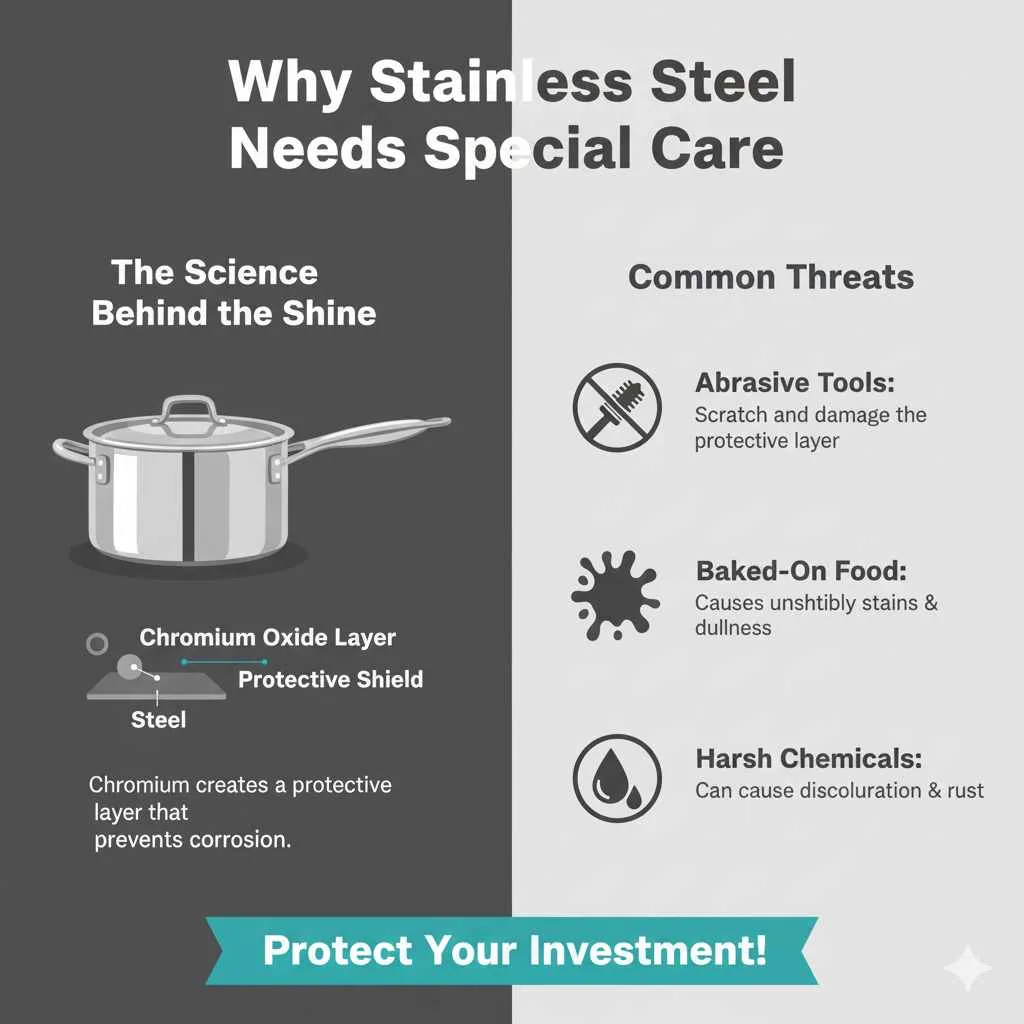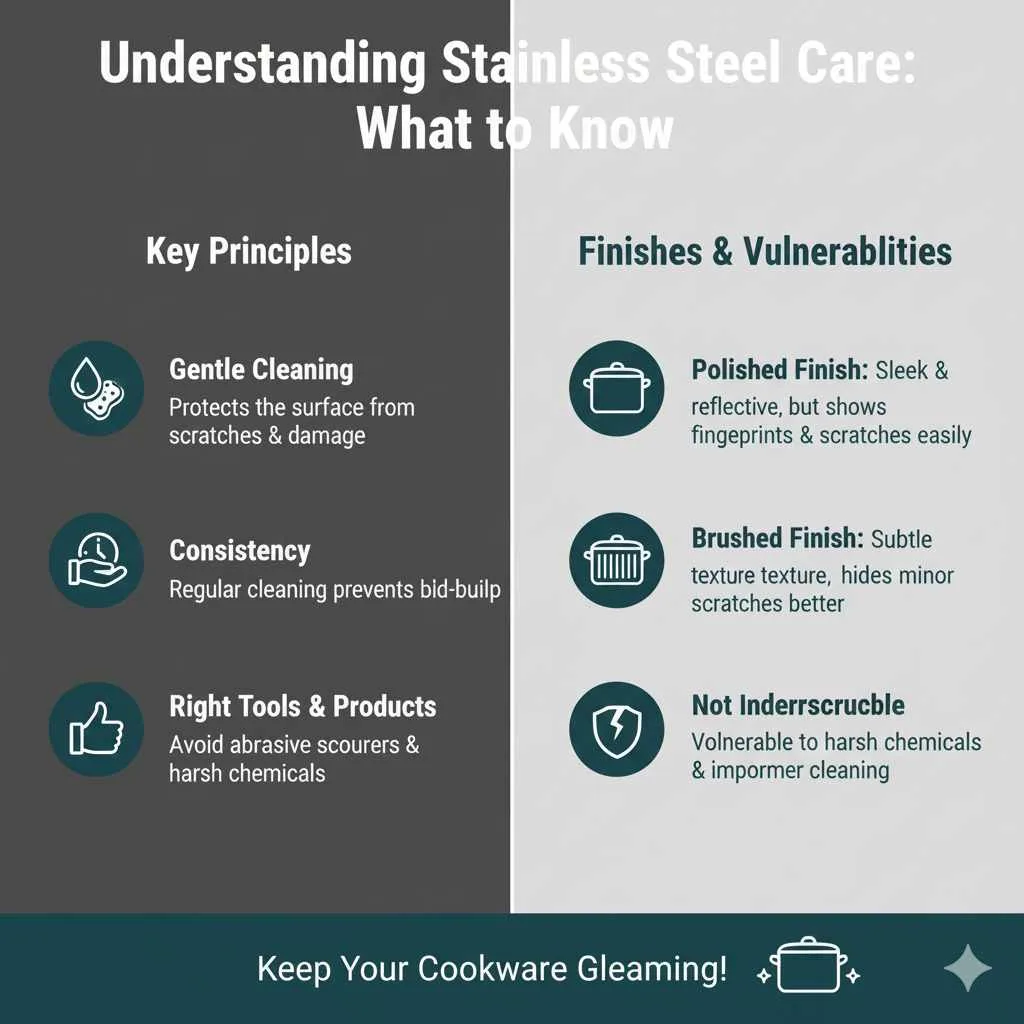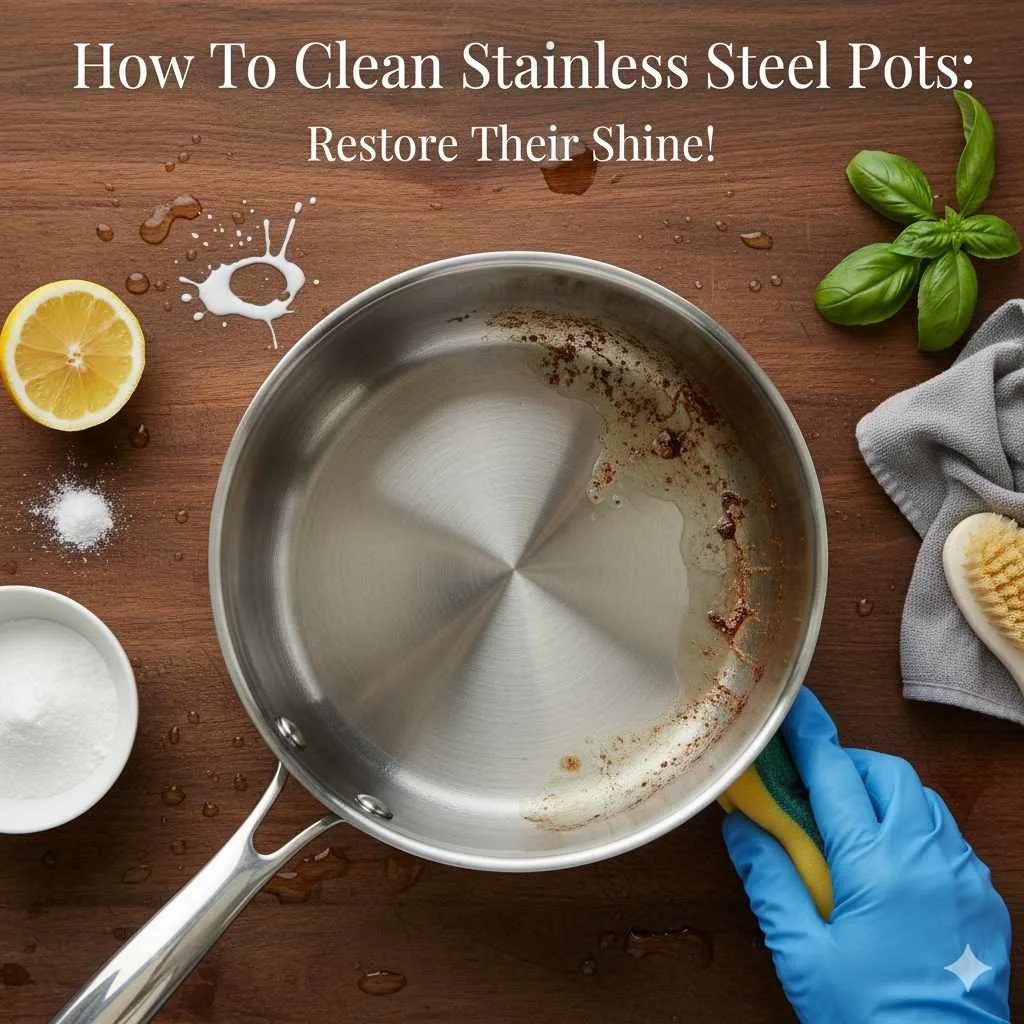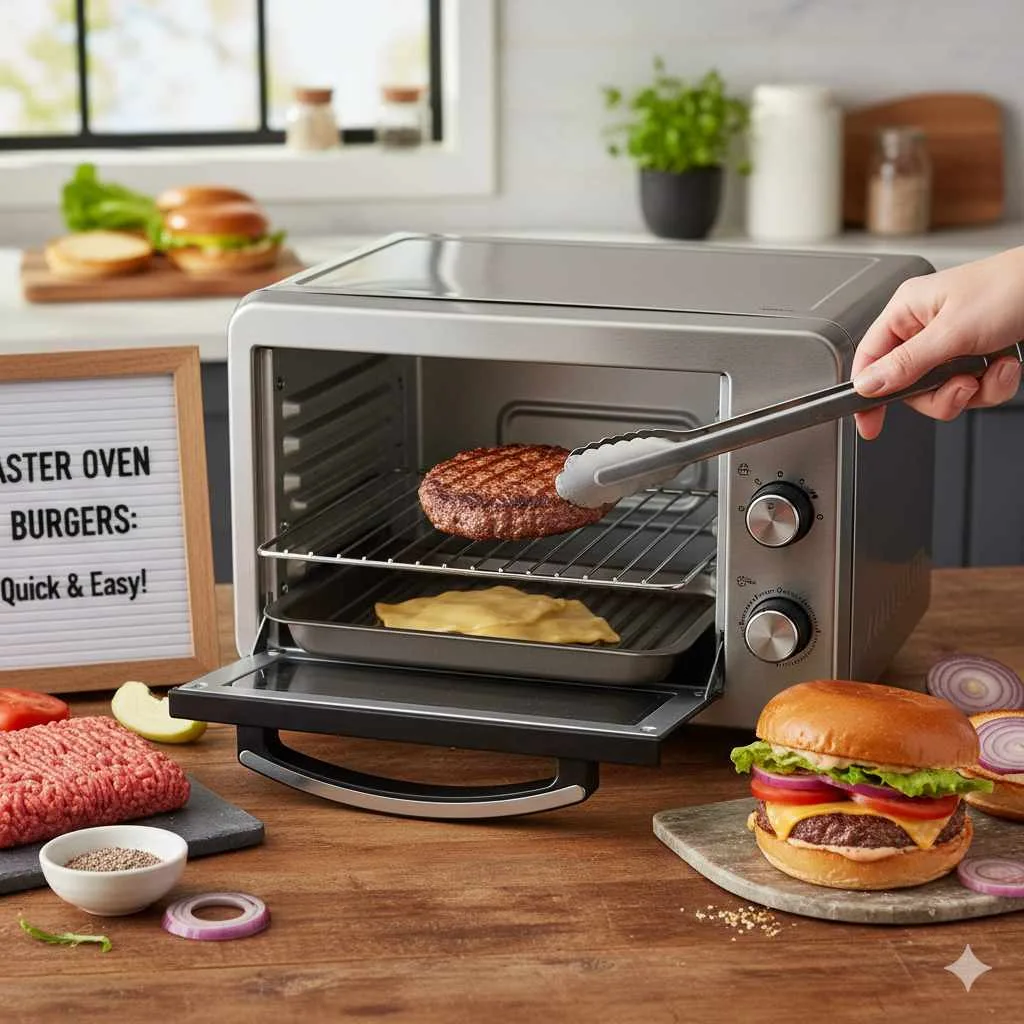Don’t let dull, stained stainless steel pots dim your kitchen’s shine! This guide offers simple, effective methods to restore their gleam, tackling everything from minor smudges to stubborn cooked-on food with common household ingredients.
Cooking is a joy, and your pots and pans are your trusty companions in the kitchen. But over time, those beautiful stainless steel surfaces can get a little… well, less than beautiful. Water spots, food splatters, and even that stubborn burnt-on gunk can leave them looking dull and uninviting. It’s a common frustration! Many people worry about scratching their pots or using harsh chemicals that might affect their food. But don’t fret! With a few simple tricks and everyday items, you can bring back the brilliant shine to your stainless steel pots and pans. You’ve got this! Let’s explore some easy, effective ways to make them look like new again.
Why Stainless Steel Needs Special Care
Stainless steel is a popular choice for cookware because it’s durable, non-reactive (meaning it won’t impart a metallic taste to your food), and looks sleek. However, its beautiful shine can be susceptible to certain issues. Understanding these helps us care for our pots better.
Stainless steel gets its strength and corrosion resistance from chromium, which forms a protective oxide layer on the surface. However, this layer can be scratched or damaged by abrasive cleaners and tools, leading to dullness or even rust spots over time. Food particles can also become baked onto the surface, making it look unsightly. Learning the right way to clean them ensures their longevity and keeps your kitchen looking stylish and inviting.

Essential Tools and Ingredients for Sparkling Pots
Before we dive into the cleaning methods, let’s gather what you’ll need. The good news is that most of these are likely already in your pantry or under your sink!
- Soft Cloths or Sponges: Microfiber cloths are excellent for polishing without scratching. Avoid steel wool or harsh scrubbing pads.
- Dish Soap: Your regular, gentle dish soap is the first line of defense.
- Baking Soda: A mild abrasive and deodorizer, baking soda is a cleaning superstar.
- Vinegar (Distilled White): Its acidity helps cut through grease and mineral deposits.
- Lemon Juice: Similar to vinegar, it’s acidic and leaves a fresh scent.
- Cream of Tartar: A great stain remover, especially for discoloration.
- Non-Abrasive Cleaner: For tougher jobs, a cleaner specifically designed for stainless steel is a good option.
- Clean Water: For rinsing and diluting mixtures.
Step-by-Step Guide: Cleaning Your Stainless Steel Pots and Pans
Let’s get those pots looking their best! We’ll start with the simplest methods and move to ones for tougher messes. Always remember to clean in the direction of the grain of the stainless steel to avoid visible scratches.
Method 1: Daily Cleaning for Everyday Shine
This is your go-to for post-meal cleanup. It’s quick, easy, and keeps buildup from becoming a problem.
- Rinse Immediately: As soon as you’ve finished cooking, rinse the pot with hot water. This helps loosen food particles and prevents them from hardening.
- Add Dish Soap and Water: Put a small amount of dish soap into the pot and fill it with warm water.
- Gentle Scrubbing: Use a soft sponge or cloth to gently scrub the inside and outside of the pot. Work in the direction of the steel’s grain if you can see it.
- Rinse Thoroughly: Rinse the pot completely with clean water until all soap residue is gone.
- Dry Immediately: This is a crucial step to prevent water spots! Dry the pot completely with a clean, soft towel.
Method 2: Tackling Minor Stains and Discoloration with Baking Soda
Baking soda is a natural wonder for cleaning. It’s gentle enough for everyday use but effective against light stains and dullness.
- Create a Paste: Mix baking soda with a small amount of water to form a thick paste. Aim for a consistency similar to toothpaste.
- Apply the Paste: Spread the paste all over the stained areas of the pot. For more stubborn spots, let the paste sit for about 10-15 minutes.
- Gentle Scrubbing: Using a soft cloth or sponge, gently scrub the paste into the stainless steel. Again, follow the direction of the grain.
- Rinse and Dry: Rinse the pot thoroughly with water to remove all baking soda residue. Dry it completely with a soft towel.
Method 3: Removing Water Spots and Light Greasy Films with Vinegar
Vinegar’s acidity is fantastic for dissolving mineral deposits that cause water spots and cutting through light grease.
- Apply Vinegar: Pour a small amount of undiluted distilled white vinegar onto a soft cloth or sponge.
- Wipe Down: Gently wipe down the exterior of the pot, focusing on areas with water spots or a dull film. For tough spots, you can let the vinegar sit for a few minutes.
- Rinse and Dry: Rinse the pot thoroughly with water to remove the vinegar. Dry it completely with a soft towel. For a light shine, you can also try buffing with a dry microfiber cloth after drying.
Method 4: For Stubborn, Cooked-On Food
Don’t despair if you have food that’s really caked on! These methods are perfect for lifting those tough messes.
Option A: The Baking Soda & Water Simmer
- Add Water and Baking Soda: Fill the pot with enough water to cover the stuck-on food. Add 2-3 tablespoons of baking soda.
- Simmer Gently: Place the pot on the stove over low to medium heat and let the mixture simmer for 10-15 minutes.
- Cool and Scrape: Let the water cool down enough so it’s safe to handle. The food should have loosened considerably. Use a wooden spoon or plastic spatula to gently scrape away the remaining residue.
- Wash as Usual: Once most of the gunk is removed, wash the pot with dish soap and a soft sponge. Rinse and dry thoroughly.
Option B: Vinegar and Baking Soda Power (Use with Caution)
This is a more powerful combination, so ensure you rinse thoroughly afterward.
- Sprinkle Baking Soda: Dampen the bottom of the pot slightly and sprinkle a generous layer of baking soda over the burnt-on areas.
- Add Vinegar: Slowly pour distilled white vinegar over the baking soda. It will fizz and bubble – this is the cleaning action!
- Let it Sit: Allow the mixture to sit and work its magic for at least 30 minutes, or even longer for very stubborn messes.
- Scrub Gently: Use a non-abrasive sponge or cloth to scrub away the loosened food.
- Rinse and Repeat if Necessary: Rinse the pot thoroughly. If some residue remains, you can repeat the process or try a gentle scrub with a baking soda paste. Always rinse and dry completely.
Method 5: Using Lemon Juice for a Natural Shine
Lemon juice offers a pleasant scent and can help lift tarnish and light stains.
- Cut a Lemon: Halve one or two lemons.
- Rub the Surface: Rub the cut side of the lemon directly onto the stainless steel surface, focusing on tarnished or slightly discolored areas. For a larger surface, you can squeeze some lemon juice onto a cloth and wipe.
- Let it Sit (Optional): For slightly tougher spots, let the lemon juice sit for about 10-15 minutes.
- Wipe and Rinse: Wipe away the lemon juice with a damp cloth. Rinse the pot thoroughly with clean water.
- Dry and Buff: Dry the pot completely with a soft towel and buff for extra shine.
Method 6: For Deep Cleaning and Tough Stains
When everyday ingredients aren’t quite enough, a specialized cleaner or a more robust approach might be needed.
Option A: Cream of Tartar for Discoloration
Cream of tartar is excellent for removing discoloration, especially that rainbow-like effect that can sometimes appear on stainless steel.
- Mix Cream of Tartar: Create a past by mixing cream of tartar with a small amount of water.
- Apply and Scrub: Apply the paste to the discolored areas and gently scrub with a soft cloth or sponge.
- Rinse and Dry: Rinse the pot thoroughly and dry it completely.
Option B: Using a Commercial Stainless Steel Cleaner
Always follow the manufacturer’s instructions when using a commercial cleaner. These are formulated to be safe and effective for stainless steel.
- Read Instructions: Carefully read and follow all instructions on the product label.
- Apply Cleaner: Apply the cleaner to a soft cloth or sponge, not directly to the pot initially.
- Clean in Direction of Grain: Wipe the stainless steel surface in the direction of the grain, applying gentle pressure.
- Rinse Thoroughly: This is very important! Rinse the pot completely with water to remove all cleaner residue.
- Dry and Buff: Dry the pot immediately with a clean, soft towel and buff for a streak-free shine. Many cleaners also recommend drying and polishing with a clean, dry cloth afterward.
Preventative Measures: Keeping Your Pots Looking Great
The best defense is a good offense! A few simple habits can prevent most cleaning woes.
- Avoid Abrasives: Never use steel wool, abrasive scouring pads, or harsh powdered cleaners. These will scratch the surface and damage the protective layer.
- Rinse and Dry Promptly: As mentioned, rinsing right after use and drying thoroughly are the most effective ways to prevent most common issues.
- Use the Right Utensils: Opt for wooden, silicone, or nylon utensils instead of metal ones that can scratch.
- Don’t Overheat: Extremely high heat can cause discoloration. Try to cook at moderate temperatures when possible.
- Clean with the Grain: Always wipe and scrub in the same direction as the metal’s grain lines to maintain its polished appearance.
Understanding Stainless Steel Care: What to Know
Different types of stainless steel may react slightly differently, but the principles of gentle cleaning remain the same. For more information on materials and their care, the National Institute of Standards and Technology (NIST) provides valuable insights into material properties.
Stainless steel is known for its durability, but it’s not indestructible. Understanding its composition can help you appreciate why certain cleaning methods work best. For example, polished finishes are more prone to showing fingerprints and scratches than brushed finishes, but both benefit from the same gentle cleaning approach. The key is always to be consistent with your cleaning routine and to choose the right tools and products.

Cleaning Common Issues: A Quick Reference
Here’s a handy table to help you remember which method to use for specific problems:
| Problem | Recommended Solution(s) | Key Ingredients |
|---|---|---|
| Everyday Grime/Grease | Dish Soap Wash | Dish Soap, Warm Water |
| Water Spots | Vinegar Wipe Down | Distilled White Vinegar |
| Minor Stains/Dullness | Baking Soda Paste | Baking Soda, Water |
| Cooked-On Food | Simmer with Baking Soda; Vinegar & Baking Soda Fizz | Baking Soda, Water, Vinegar |
| Discoloration (Rainbow Effect) | Cream of Tartar Paste | Cream of Tartar, Water |
| Stubborn Residue/Heavy Stains | Commercial Stainless Steel Cleaner (follow instructions) | Specialized Cleaner |
| Fingerprints/Smudges on Exterior | Vinegar Wipe or Dry Buffing | Vinegar or Microfiber Cloth |
This table should serve as a helpful guide when you’re unsure about the best approach for a particular mess. Remember to always start with the gentlest method first!
FAQs About Cleaning Stainless Steel Pots
Q1: Can I use steel wool to clean my stainless steel pots?
A1: No, it’s best to avoid steel wool and other abrasive scrubbers. They can scratch the surface of your stainless steel, leading to permanent damage and potential rusting.
Q2: How do I get rid of that rainbow-like discoloration on my pots?
A2: That’s often caused by overheating. A paste made from cream of tartar and water, or a gentle scrub with a baking soda paste, can help lift this discoloration.
Q3: My pots have burnt food stuck on them that won’t come off. What should I do?
A3: For burnt-on food, fill the pot with water, add a few tablespoons of baking soda, and simmer gently for _10-15_ minutes. Let it cool, then gently scrape with a wooden spoon or plastic spatula. A strong vinegar and baking soda fizz can also work wonders.
Q4: How can I prevent water spots on my stainless steel pots and pans?
A4: The best way to prevent water spots is to dry your pots and pans thoroughly with a soft towel immediately after rinsing and washing. If spots do appear, a quick wipe-down with distilled white vinegar can usually remove them.
Q5: Is it safe to use vinegar or lemon juice on stainless steel regularly?
A5: Yes, both vinegar and lemon juice are acidic and safe for regular use on stainless steel when diluted or used as directed. They help cut through grease and mineral deposits. Just be sure to rinse thoroughly afterward.
Q6: What’s the best way to get a streak-free shine after cleaning?
A6: The key to a streak-free shine is thorough drying. After rinsing, dry your pots completely with a clean, soft towel, such as microfiber. For an extra polished look, buff the dry surface with another clean, dry cloth.
Q7: Can I put my stainless steel pots in the dishwasher?
A7: Many stainless steel pots are dishwasher-safe, but handwashing is often recommended to preserve their shine and prevent potential dulling or spotting from harsh detergents and prolonged exposure to heat and moisture. Always check the manufacturer’s care instructions for your specific cookware.
Conclusion
Keeping your stainless steel pots and pans looking beautiful and performing their best doesn’t have to be a chore. With these simple, effective, and often pantry-staple solutions, you can tackle everything from daily grime to stubborn burnt-on messes. Remember to always work gently, in the direction of the grain, and to dry them well. You’ll not only extend the life of your beloved cookware but also ensure your kitchen always feels bright and welcoming. So go ahead, whip up that next delicious meal with confidence, knowing that a little care can go a long way in maintaining the gleam of your essential kitchen tools!








Leave a Reply